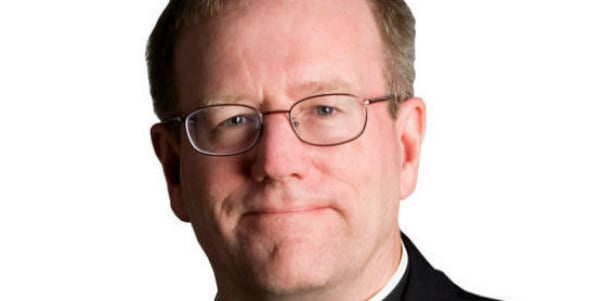 Shamelessly cribbed from Lucianne.com
Shamelessly cribbed from Lucianne.com
Deacon Greg, who rarely has time to really sit down and write like this, hits one out of the ballpark, today, as he takes a look at the complete non-coverage of Pope Benedict’s triumphant visit to the United Kingdom. Really, it’s so good that it’s difficult to excerpt, but here is a little:
One of the biggest surprises of Pope Benedict’s historic trip to the United Kingdom may be how few people realize that it was, in fact, historic. Sunday night, I was chatting by phone with my father-in-law in Maryland. I told him I’d been busy with the papal coverage all weekend.
“Didn’t seem like much happened,” he said.
“Really?,” I replied. “He was the first pope to visit the Church of England’s Westminster Abbey. He stood there with the Archbishop of Canterbury, side by side, as they both pronounced the final blessing and made the sign of the cross together.”
“He did that?” My father-in-law sounded genuinely surprised.
“He went to the hall where Thomas More was sentenced to death and delivered a speech about religion to the civil leaders of Great Britain . . .And he took part in his first beatification: Cardinal John Henry Newman, an Anglican priest who converted to Catholicism.” […]
I started to wonder what sort of coverage the trip had received. After I hung up the phone, I searched through several newspaper websites. I clicked on the New York Times, Los Angeles Times, Boston Globe.
Nothing, nothing, nothing. None of them mentioned on their home page the pope’s just-completed trip.
You’ll want to read the whole thing. It’s interesting to ponder all we do not get told about the people whom the media supposedly “covers.”
Finishing up some reading last night, I was really impressed, also, with Ross Douthat’s equally excellent column about Benedict and the Crowds:
But in turning out for their beleaguered pope, Britain’s Catholics acknowledged something essential about their faith that many of the Vatican’s critics, secular and religious alike, persistently fail to understand. They weren’t there to voice agreement with Benedict, necessarily. They were there to show their respect — for the pontiff, for his office, and for the role it has played in sustaining Catholicism for 2,000 years.
Conventional wisdom holds that such respect is increasingly misplaced, and that the papacy is increasingly a millstone around Roman Catholicism’s neck. If it weren’t for the reactionaries in the Vatican, the argument runs, priests might have been permitted to marry, forestalling the sex abuse crisis. Birth control, gay relationships, divorce and remarriage might have been blessed, bringing lapsed Catholics back into the fold. Theological dissent would have been allowed to flourish, creating a more welcoming environment for religious seekers.
And yet none of these assumptions have any real evidence to back them up. Yes, sex abuse has been devastating to the church. But as Newsweek noted earlier this year, there’s no data suggesting that celibate priests commit abuse at higher rates than the population as a whole, or that married men are less prone to pedophilia. (The real problem was the hierarchy’s fear of scandal, which led to endless cover-ups and enabled serial predation.)
And yes, the church’s exclusive theological claims and stringent moral message don’t go over well in a multicultural, sexually liberated society. But the example of Catholicism’s rivals suggests that the church might well be much worse off if it had simply refashioned itself to fit the prevailing values of the age. That’s what the denominations of mainline Protestantism have done, across the last four decades — and instead of gaining members, they’ve dwindled into irrelevance.
That’s another must-read, right there. And you can watch a video of Douthat making his case, here (H/T Reader saveliberty)
Over at Inside Catholic, Joanna Bogle writes from England about what Benedict brought with him:
Will everything in Britain be different from now on? Of course not. Life trundles on. We’ve still got all our usual problems — our high crime rate, our broken families. But we’ve been reminded of the great and noble values on which a sane society needs to rest, about the need to recall spiritual things, about the fact that we should not try to pretend that we are without a religious heritage. We have seen that we can lift our minds and hearts to the things of God, that there are still huge numbers of young people who want to pray and who honor Jesus Christ and are glad to be part of His Church.
Benedict brought blessings with him — he has, in a sense, given us back a country we thought we had begun to lose and even to forget: a place of decency and neighborliness and kindness and good humor. This was a visit that rested on the goodwill and large-mindedness of great numbers of British people who too often get ignored — the people who were prepared to listen to what the pope really had to say, instead of what his opponents thought he would say; the people who liked the idea of a pope coming to visit, who thought that being reminded about Christianity was no bad thing.
And I DO like how Margaret Cabaniss throws her hands up in frustration at the press:
I’m curious to know how many state visits it will take — how many meetings with abuse victims, how many World Youth Days, how many photo ops like this — before people stop trotting out the Rottweiler line, as if he has suddenly undergone some radical transformation, and state the obvious: Pope Benedict is a “shy,” “warm,” “lovable, elderly figure.” It’s not some act he’s putting on to win over crowds; anyone who has been paying attention would know that — as the massive crowds who turned out for his visit can attest. Yes, Benedict had a reputation (unfair even then) as the Church’s watchdog — ten years ago. He’s now been pope for five. It’s not like he’s been hiding under a rock all that time, and this is some shocking new character development. Can we please come up with some new headlines?
Well, once the press fixes on a narrative, they are very unwilling to move from it. They’ve told us Benedict is God’s Rottweiler for decades, now. They are incapable of saying “we were wrong,” so they must gently move to a “how he’s changed!” template. That way they can keep repeating the old nonsense, while trying to analyze what vulnerability within the pope made him “come around.” Tiresome, isn’t it?
The Sr. Catherine Daily has “The Definitive Guide” to the papal visit. And there are more thoughts here
Finally, Benedict and Your First Communicant: I’ve written before about the lovely children’s book, emFriendship With Jesus, written by Amy Welborn with gorgeous illustrations by Ann Engelhart. Currents TV recently interviewed Engelhart, which reminded me to recommend it again. She informs me:
Ignatius Press is supposed to be distributing it which, should be great…not sure yet when…but soon… according to our publishers at Catholic Truth Society.
Buy it as a Christmas present or put it away until May; you’ll be glad.











